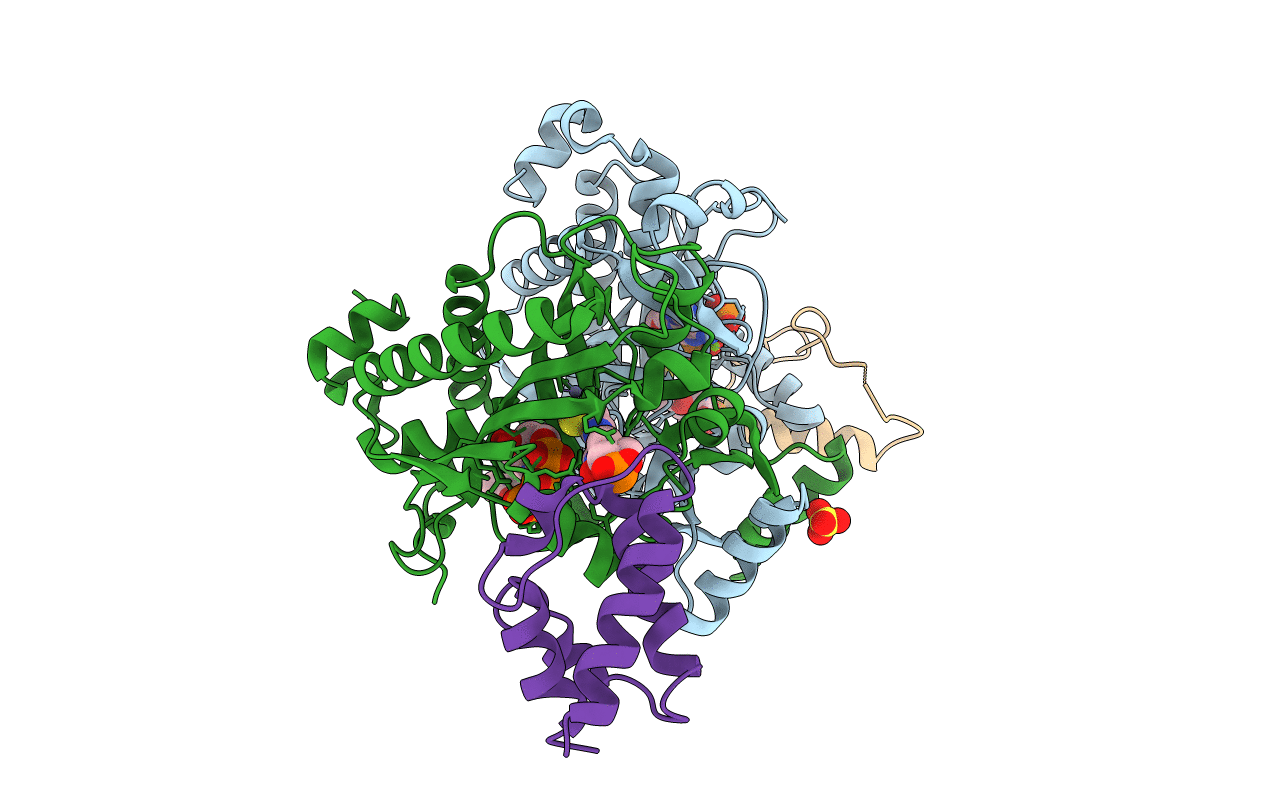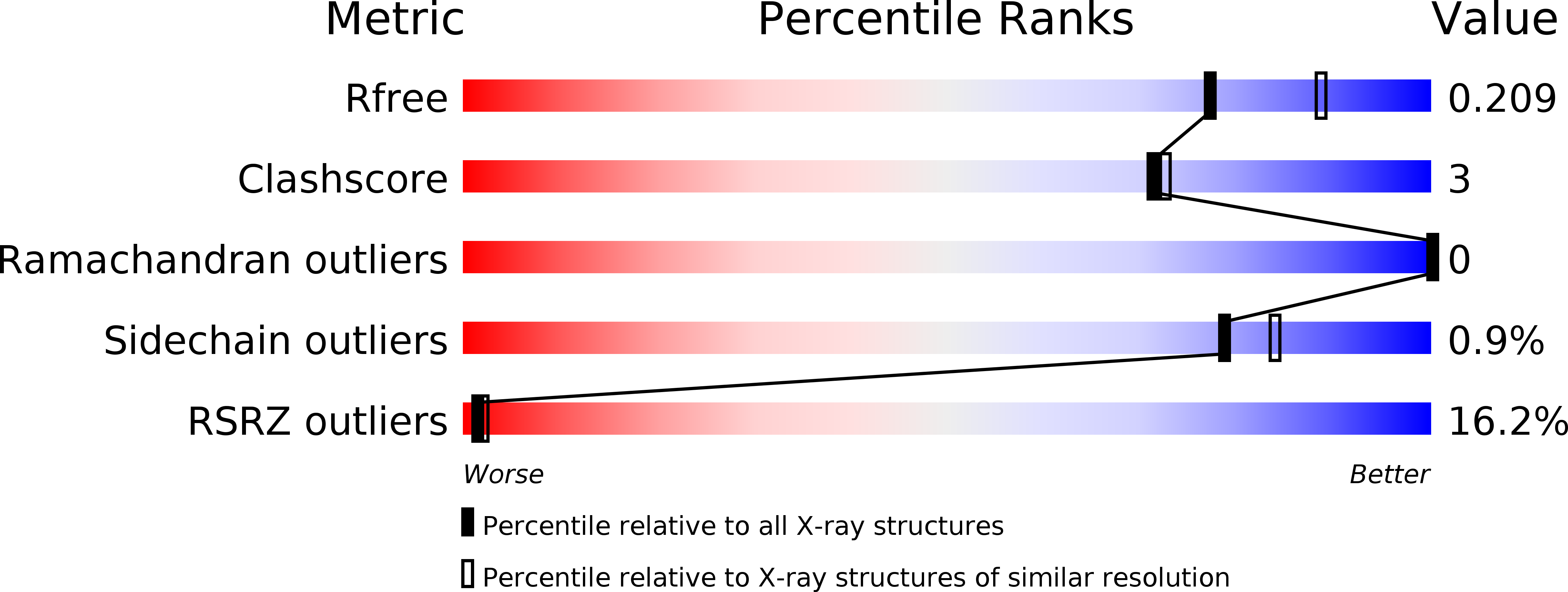
Deposition Date
2012-09-13
Release Date
2013-03-06
Last Version Date
2025-03-26
Entry Detail
PDB ID:
4H2U
Keywords:
Title:
Crystal structure of Bradyrhizobium japonicum glycine:[carrier protein] ligase complexed with cognate carrier protein and ATP
Biological Source:
Source Organism:
Bradyrhizobium japonicum (Taxon ID: 224911)
Host Organism:
Method Details:
Experimental Method:
Resolution:
2.10 Å
R-Value Free:
0.20
R-Value Work:
0.17
R-Value Observed:
0.17
Space Group:
P 21 21 21


